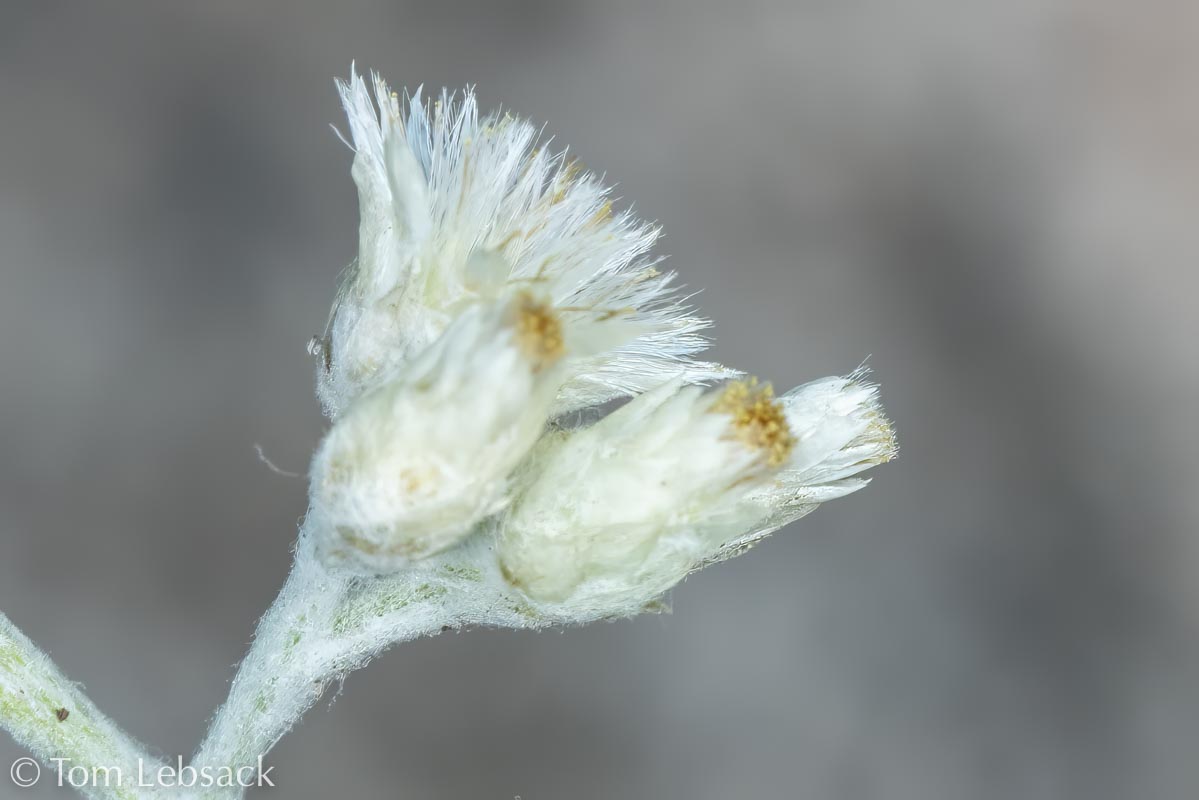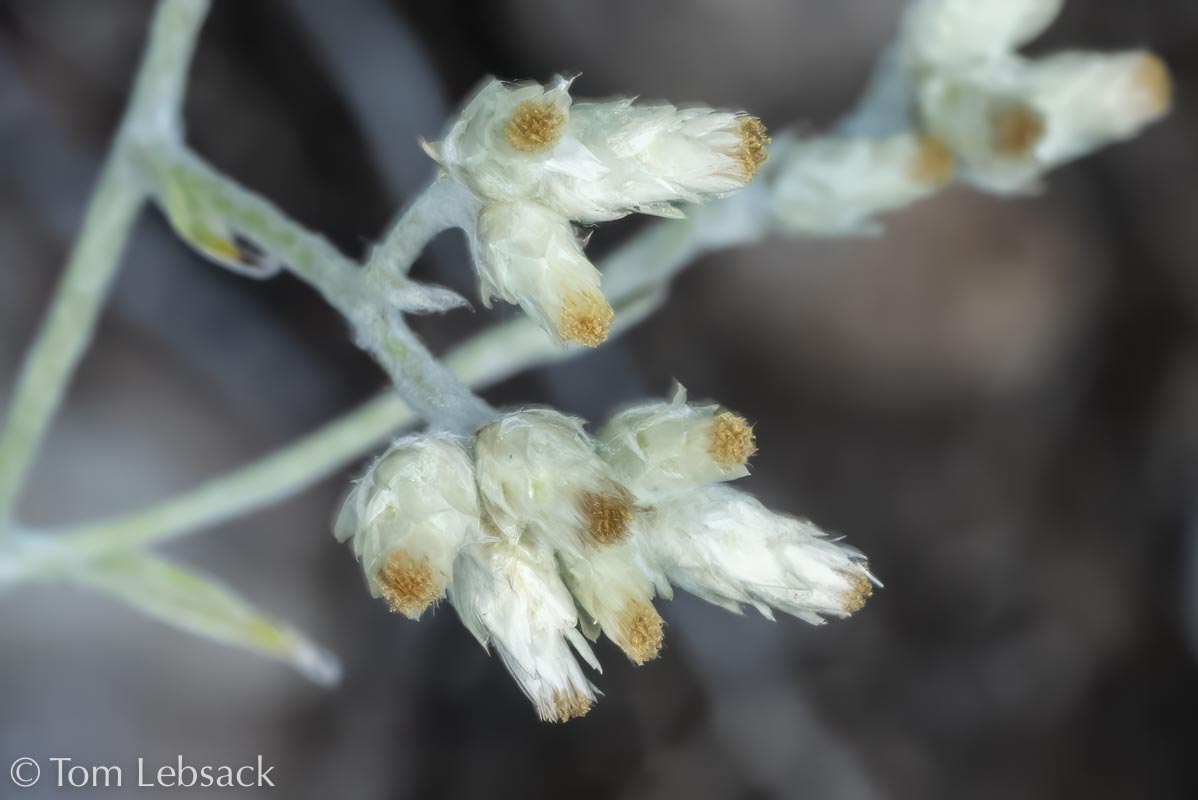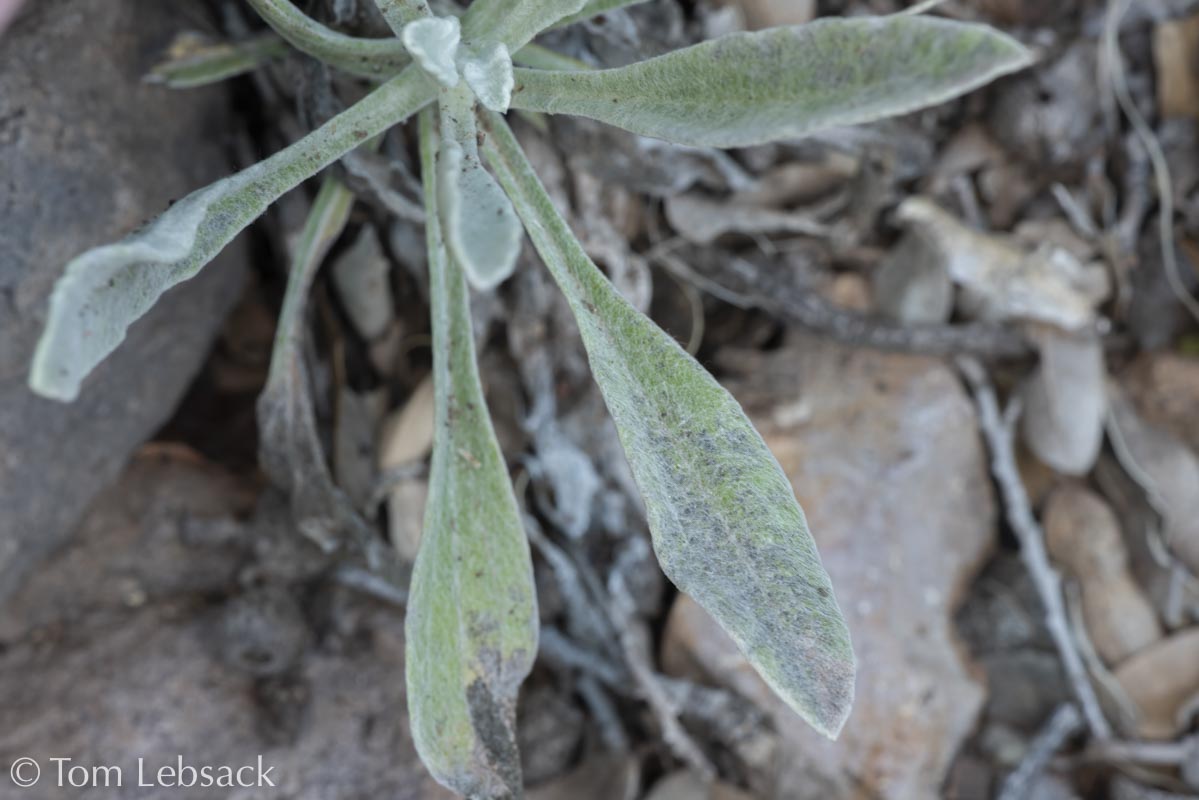Texas Wildbuds
Pseudognaphalium canescens
(Wright’s Cudweed)
| Scientific Name | Pseudognaphalium canescens | USDA PLANTS Symbol | PSCA11 |
| Common Name | Wright's Cudweed | ITIS Taxonomic Serial No. | 508108 |
| Family | Asteraceae (Sunflower) | SEINet Reference |
Click Here |
| Description | Habitat: Dry rocky slopes, lava beds, grasslands and woodlands, from 3,500-8,500 ft. Plant: Erect annual or perennial up to 20 inches tall; much-branched white-woolly stems. Leaves: Alternate, sessile, not decurrent, oblanceolate (lower) to broadly linear (upper), 3/4 to 4 inches long, white-woolly surfaces. Inflorescence: Open panicles of multiple clusters on branching stem tips, each with several small 1/4-long bud-like flowers; no petals; many overlapping, pearly white phyllaries; many small, yellow to brown disk florets. Bloom Period: May to November. Reference: SEINet and Burke Herbarium. |
BONAP Distribution Map Map Color Key Map Color Key |
Texas Status: Native |
Banner photo of Castilleja indivisa and Lupinus ssp. taken along FM 1323 north of Johnson City, Blanco County
© Tom Lebsack 2025
Every attempt is made to provide accurate, up-to-date, and relevant information, but the completeness or accuracy of any information presented on this website cannot be guaranteed. I use authoritative references to insure high standards of accuracy and review and update the information frequently.


